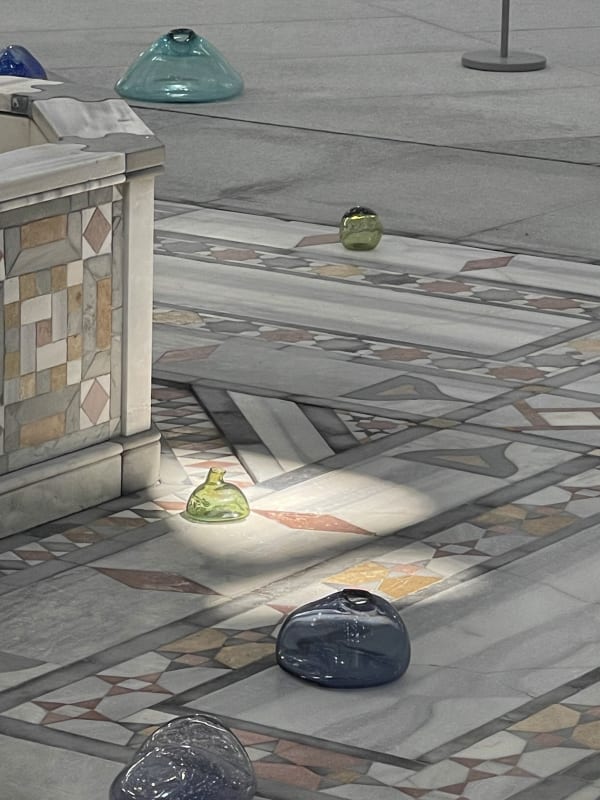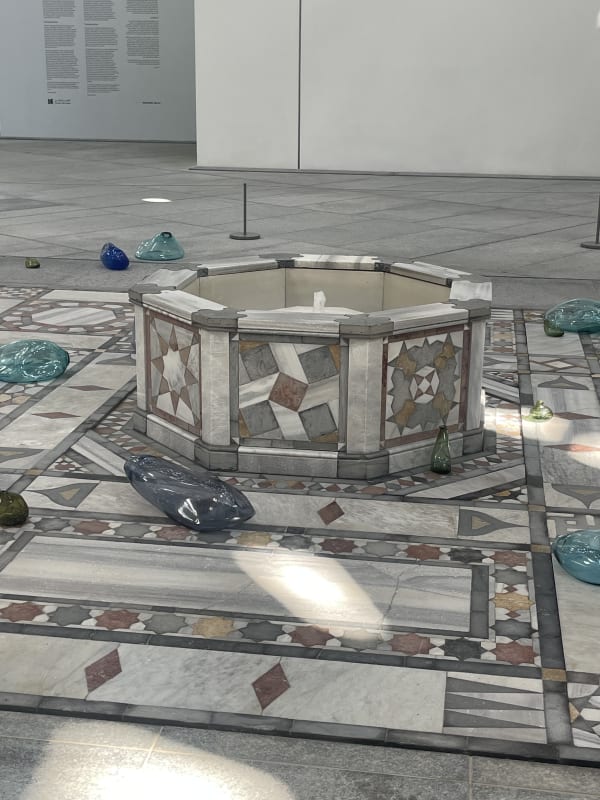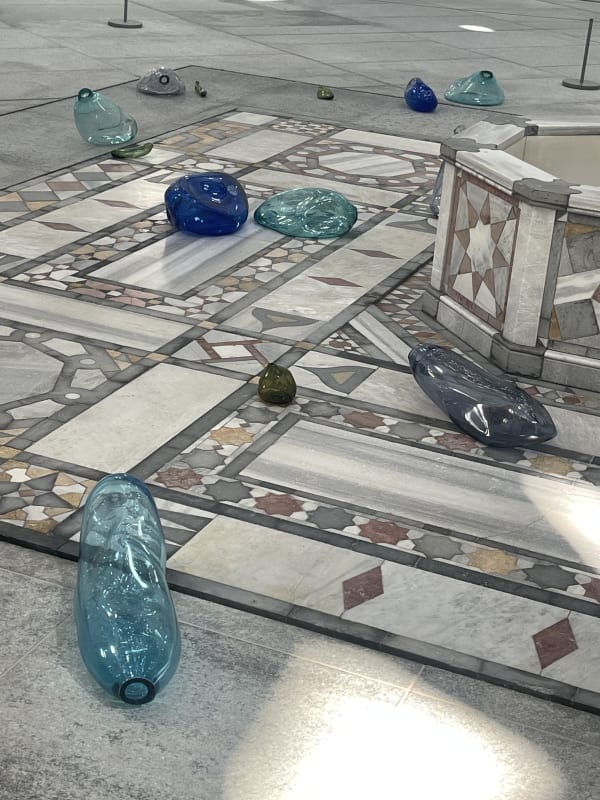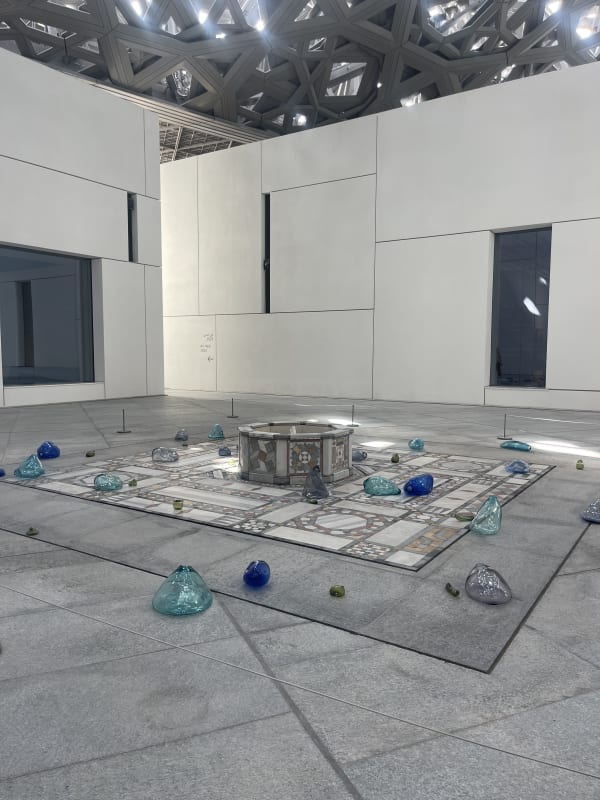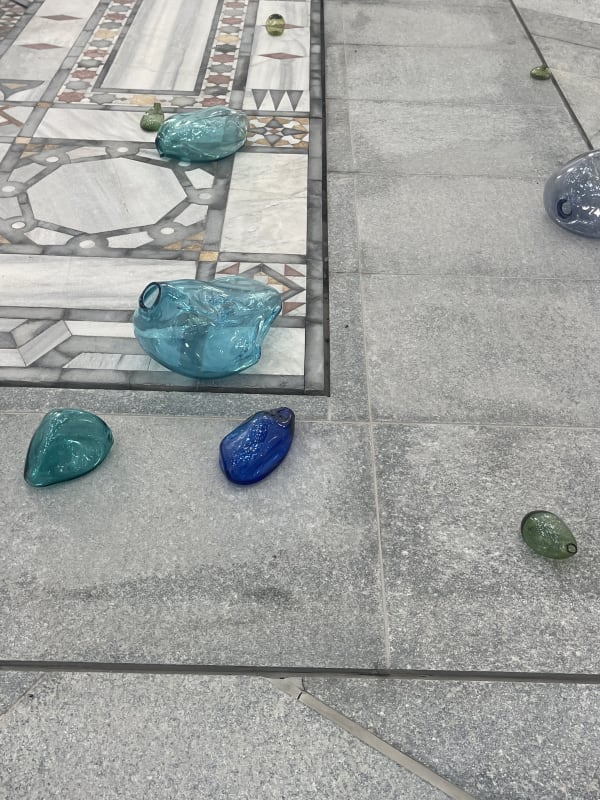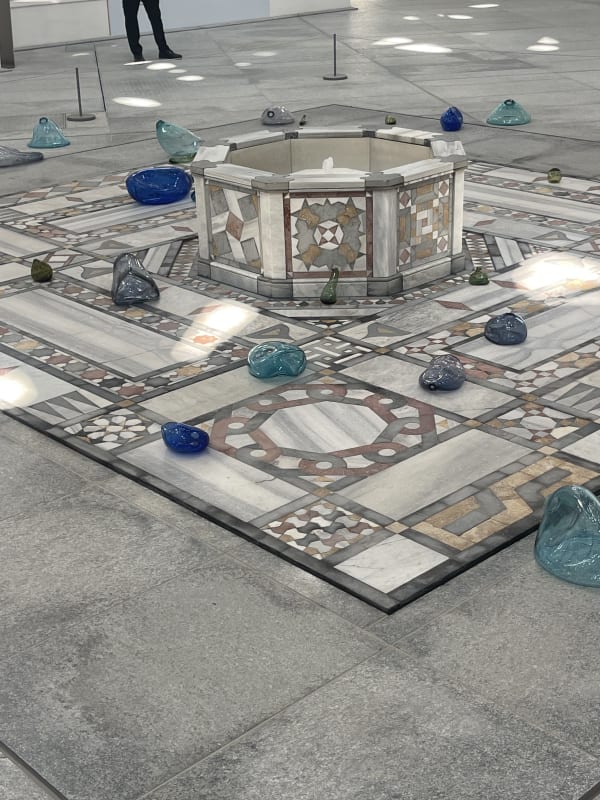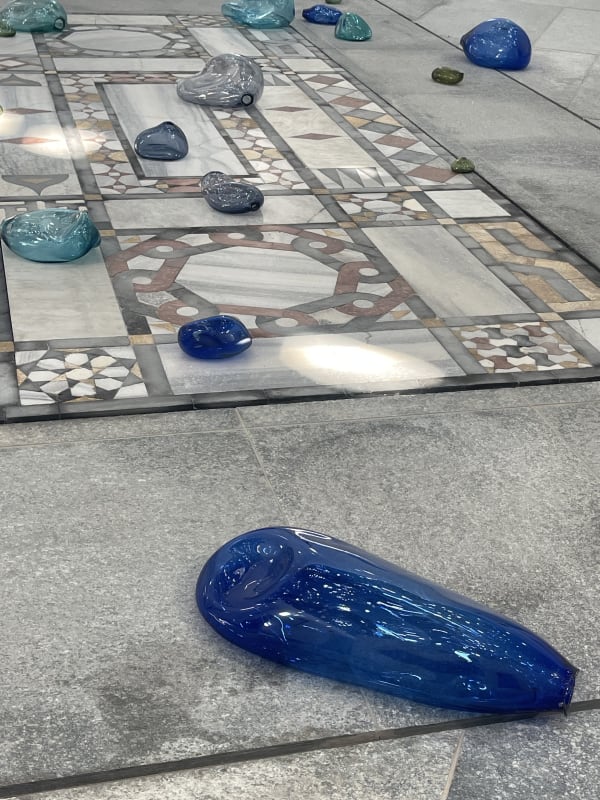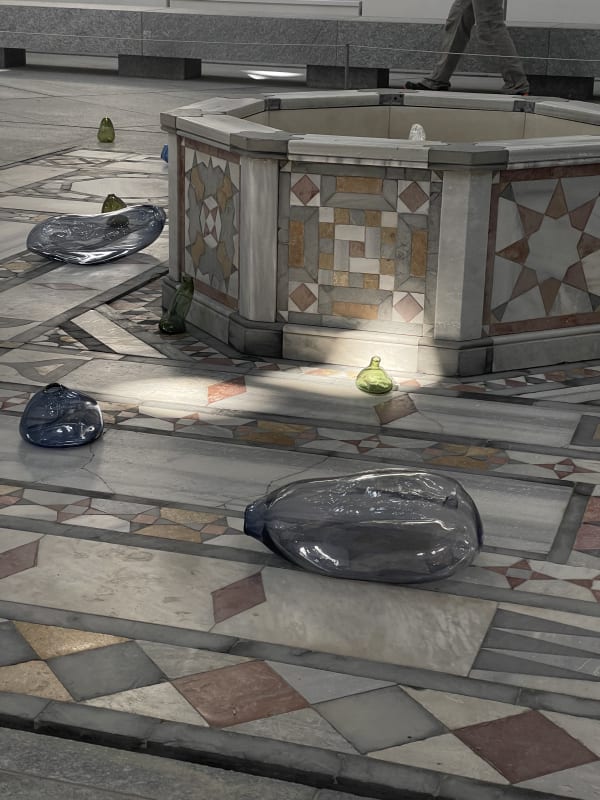"Waterdust" by Sawsan Al Bahar and Bahar Al Bahar is currently featured in the "Art Here 2023" exhibition at the Louvre Abu Dhabi. The installation is placed with the 18th-century Damascene fountain, a prominent piece from the museum's collection, set beneath the museum's striking floating dome. "Waterdust" consists of handblown glass sculptures arranged around the octagonal fountain, placed on a floor made of meticulously crafted polygons of marble, limestone, and slate. These glass sculptures, vary in shades from bluish and greyish tones to a lush moss green. Their shapes range from small oblong forms to larger, rounded pieces, all with irregular surfaces that resemble water droplets shaped by the wind.
The thoughtful arrangement of these sculptures become apparent as sunlight filters through the dome and moves over the sculptures. As the light shifts, the glass colors fade and become more transparent, and when the light moves away, the glass's colors intensify, reflecting the geometries of the dome above. This artistic work is a collaboration with sunlight, as described by the artists Sawsan and Bahar Al Bahar.
The "Art Here 2023" exhibition explores the theme of transparency, with "Waterdust" being one of the seven projects shortlisted for the Richard Mille Art Prize. While transparency is a central theme, these projects also delve into additional layers of metaphorical, historical, and social significance. "Waterdust" specifically reflects on the endangered craft of Syrian glassblowing, which has suffered due to the war and its economic consequences. The placement of the glass sculptures around the Damascene fountain draws parallels between this traditional craft and the craftsmanship behind the fountain, both of which are sources of pride for Syrian artistry and heritage.
The Al Bahar siblings initiated the project by tracing the shapes of sunlight around the fountain, outlining them on sheets of paper to capture the play of light. They collaborated with Ahmad Al Halaq, the last remaining glassblower in Damascus, at his Abu Ahmad glass factory. Economic challenges prevented them from completing the entire project at his shop, as the craft has been severely impacted, particularly due to fuel shortages.
While the smaller green sculptures in "Waterdust" were created by Al Halaq, the larger pieces were crafted in collaboration with Berlin Glassworks Studio, a German glassblowing initiative led by Nadania Idriss, who has Syrian heritage. The initiative not only aims to grow the craft but also provides workshops for children and refugees to promote glassblowing as an art form. The Al Bahar siblings noted a difference in approach between Al Halaq, for whom glassblowing is a heritage and not just a profession, and the glassblowers in Berlin who inherited the craft.
November 24, 2023

